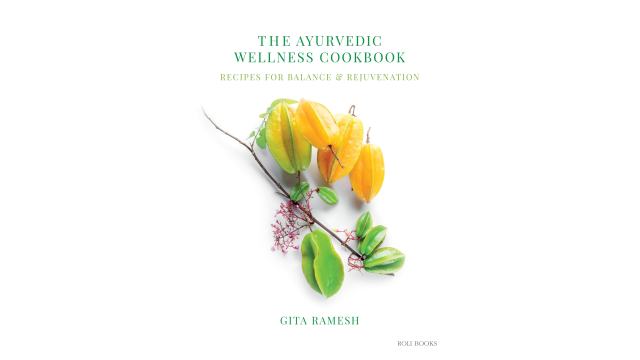Get Comfy To Meditate

After teaching meditation and practical spirituality to countless people, I’m amazed at how simple the most important teachings are. Over the years, the main thing that I’ve seen help people go deeper in their practice of sitting meditation is helping them learn to sit. And by “sit,” I mean “sit comfortably” — not correctly, not straighter, not better. Comfortably.
Over the course of 25 years’ teaching, I’ve noticed a common theme. I’m giving a talk to a group, and they’re engaged — they’re sitting, their hearts are open, and we’re having a discussion. Then, I say something like, “Now let’s do a meditation.” If the group is experienced with yoga and sitting practice, something strange happens.
As soon as I say the word meditation, their whole demeanor changes! While I was talking, they were at ease; they were open, happy, and comfortable — even laughing. As soon as I say meditation, everyone shifts. They sit up unnaturally straight, wipe off their smiles, and suddenly I’m in a room full of very serious, uncomfortable people.
As funny as it is, it’s not so funny to me as a teacher because it’s not just their outward appearance that changes; I can also feel that their inner posture shifts. Before, they were open, laughing, easy — now, they are statues.
The Problem with Sitting Still
Meditation, as we practice it, originated in India thousands of years ago. The ancient yogis who gave us the practice of meditation are usually depicted sitting with legs crossed, no back support, spine erect, and motionless. Many of us may even have a statue of the Buddha or Shiva near our practice space. Naturally, we want to emulate what we see. There are a few problems with this. For one, they are statues made of stone or wood or metal — so by nature, they are totally motionless. Next, they are religious icons, so they are formal depictions.
Additionally, let’s examine the unsupported cross-legged posture. Unless you are somewhat accomplished in yoga asanas, this is a difficult way to sit comfortably for most modern people. The ultra-upright, legs-in-lotus-posture version that we think of when we think of meditation is even harder.
The ancient yogis probably did use this asana for sitting meditation. But in ancient India, everyone sat down on the floor or the ground. Lotus Pose (padmasana) is just a slightly more formal posture than the one the yogis would have used for reading, writing, or eating. Leaning against walls also wasn’t commonly done.
For these yogis, the most supported, comfortable way to sit in their caves was to lock their legs into padmasana, put an animal skin beneath them to insulate them from the cold stone floor, and make their spine as vertical as possible to balance the posture so they could let go. This was not because it was the “proper” posture to meditate in. It was because it was the most comfortable. I believe if the ancient yogis had sofas in their Himalayan caves, they would have meditated on them! Generally, we sit on chairs with our legs down, so we are going to be more comfortable sitting in chairs or, at the very least, sitting with back support.
Discomfort Doesn’t Make Meditation Better
One of the key treatises on meditation is the Patanjali Yoga Sutra. It has an aphorism about the seat we should use for meditation:
स्थिरसुखमासनम् ॥४६॥
sthira-sukham-asanam ||2.46||
In Sanskrit, the word asana refers to the seat or the posture or the sitting. The word sthira means "steady." The word sukham means "pleasurable" or "easy." This sutra is advising that we sit in a way that is both steady and pleasurable.
We modern people, especially those of us who would lean toward starting a meditation practice, often have a “no pain, no gain” mentality when it comes to “self-improvement.” If someone tells us to sit up straight, we do that. If it hurts to sit down on the floor when we’re trying to sit, there might even be a part of us that feels like we are performing some kind of austerity, purifying ourselves with the discomfort.
Trust me, those ideas may have their place in other contexts, but when you’re learning to meditate, physical pain is a serious hindrance. You can meditate in pain — in fact, meditation can be a great way to cope with chronic pain — but if you are inflicting pain on yourself, that’s another story. If you’re sitting on an uncomfortable seat and a more comfortable one is available, you’re inflicting pain on yourself. There’s nothing “yogic” about sitting like a Buddha statue.
When we sit for meditation, we are trying to let go, unravel our tension, dissolve our hardness, and open the spaces in us that feel closed. Hardening our body is not going to help that process. On a deeper level, we are learning about who we truly are, so imitating someone else (even the Buddha) is not authentic, and it’s not going to help.
The Solution to an Uncomfortable Seat
If you recall the sutra, the key is in the second word: sukham. Sukha means “pleasure, joy, happiness, ease, comfort, enjoyment.” Sukha is the opposite of duhkha, which means “pain.” We cultivate sukha when we make our body cozy. And pleasure is not just physical, either; it can also be aesthetic. We can sit on a seat that feels good to our body and also one that is beautiful. We can create a seat for our practice that inspires us, that makes us want to practice.
When I sit, I have a wonderful, comfortable living room chair that is large enough for me to sit cross-legged if I want, or I can sit with my legs down. Next to it is a small table where I can put my journal and pen and my favorite cup of tea. Finally, it’s next to a window where I have a nice view of the outdoors. So, when I close my eyes and practice meditation, my body is supported and steady (sthira) and also super cozy (sukha).
Even if my meditation isn’t so deep or good, I still feel wonderful sitting there. Once I sit down, I don’t want to get up. Contrast this to sitting on a yoga mat in the middle of the room, imitating a meditative posture that’s probably not compatible with your body.
If you really are comfortable sitting with your legs crossed, make sure you have some padding under your ankles. Most people also need support under their hips to allow their backs to be comfortable. Also, lean! Set yourself up against a wall or sit cross-legged in a chair or sofa that has back support.
Sometimes it’s suggested to lay down to meditate, but generally we learn to sit up because we live and face our challenges in an upright position. If we learn to let go in sitting meditation, that energy is more transferable to daily life. I like to advise people to be so comfortable that they could fall asleep, but upright enough to stay alert and enjoy the process of letting go.
I also suggest allowing yourself to move. The religious icons we use for inspiration aren’t breathing. They aren’t alive. I encourage people to allow themselves to move in meditation. You can make sound, too. Sighing, moaning, even screaming into a pillow sometimes can be a great way to open yourself and soften into meditation. Sway, rock gently, change your leg positions as needed — keep your body alive, even as you relax deeply. You don’t have to have your spine totally straight. It’s helpful to be more or less upright to avoid putting undue strain on your spine, but the meditation doesn’t need your “chakras to be aligned” to do its magic. Be you, sitting for meditation.
The more you’re able to let go in your body, the better your mind and heart will be able to embrace the deep medicine of meditation.
Learn how to sit and meditate in this course, 21-Day Jump-Start to a Powerful, Joyous Meditation Practice by meditation teacher David Harshada Wagner.
Header photo: GSPictures/E+/Getty Images







